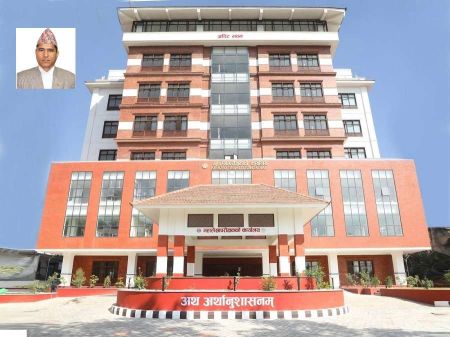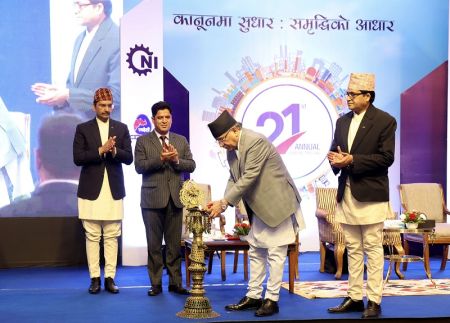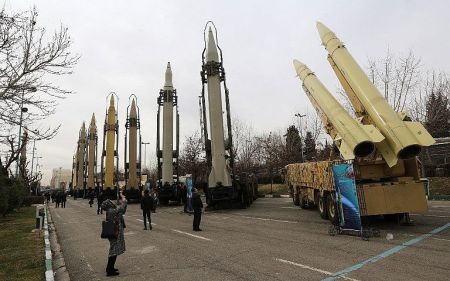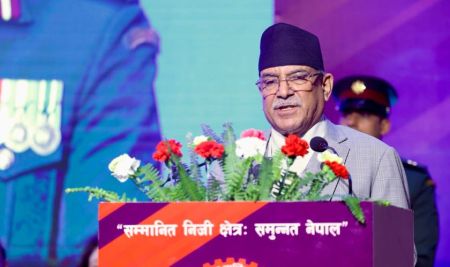.jpg)
There are many ways to assess and evaluate training. Selection of the right evaluation tools only benefits the organization, line managers, trainer and trainees as a whole.
--By Purna Man Shakya
Training is the acquisition of knowledge, skills, and competencies through the teaching of vocational or practical skills and knowledge that relate to specific useful competencies. Training has specific goals of improving one's capability, capacity, productivity and performance. People of many professions and occupations refer to training as professional development. There are many ways to assess and evaluate training. Selection of the right evaluation tools only benefits the organization, line managers, trainer and trainees as a whole. In Nepali organizations, business heads and training managers are under constant pressure to prove the effectiveness of training.
Generally, training can be divided into two types i.e. training related to core technical values and training related to behavioural changes. Evaluation of technical training is comparatively easier than that of behavioural training. Even a “Saptaha” can be taken as a behavior-change training which encourages people for positive behaviours. It is also to be noted that perception plays a major role in making training effective. For some people, training is just a time-spending area, while for others, it is information updating area and for the rest it is a breeding ground for learning new things and preparing ground for applying them. So, selection of the right trainees is the major task which determines whether the training would be fruitful. Generally, those trainings become effective which are given to the right person in the right time. Training would be much more fruitful if the organization becomes clear on its vision, mission, goals, and objectives beforehand.
In order to make training effective, few conditions need to be met.
• Trainings should be directed towards fulfilling organizational goals and needs. So, for training effectiveness, serious commitment from top management, line managers and trainees is required.
• All layers of the company must believe that training is a process and not a singular learning event. If personal development is part of the formal appraisal, staff will know that a direct correlation exists between training, acquiring new skills and their career success.
• Training should align with corporate goals.
• Designing a training requirement should begin with an accurate assessment of what an individual does well and what needs improvement. It can be started with documenting current performance and comparing that with what could be. The goal is to demonstrate that with the acquisition of new skills through training, employees will enhance their job performance.
• There are many ways to deliver training – classroom, self-paced instruction, mentoring, computer-assisted and web-enabled, as well as special project opportunities. Most effective delivery method should be chosen for the team given the objectives.
• Follow up. After the completion of the training, an opportunity to apply the skills learned should be given. People cannot successfully learn skills without practicing on the job. Supervisors should talk to each employee to ensure that the training was valuable and provided them with the skills they needed. This also provides the supervisors an opportunity to underscore commitment to training and to solicit any future training needs. Trainees should be made to understand the importance of their input - exactly what and why they are being asked to do.
• Training effectiveness can also be evaluated in four steps by using Kirkpatrick model of evaluation. According to this model, Level 1 means measuring the participant’s reactions to the training programme including reactions to the overall programme (outcomes). Similarly, Level 2 means measuring what participants have learned from their involvement in the programme while Level 3 means measuring the transfer of knowledge, skills and attitudes from the training context to in vivo or real-life contexts (the classroom and study). Likewise, Level 4 means measuring “return-on-investment”, or the extent to which the programme has produced results.
Few tools can be used to evaluate training effectiveness. Such as;
• Training with dummy people as in airhostess training conducted by airlines. In such trainings, dummy customers are used. Effectiveness of such trainings can be evaluated by comparing a video taken before and after the training.
• Mystery audit can be performed but it is advised to pre-inform the staff about it.
• Training progress can be tracked by comparing jobs done before and after the training. Such schemes can be used for the sales training where ROI before and after the training is compared and evaluated.
• Expectations and actual deliveries can be compared.
• A form with a score can be used to evaluate training effectiveness before and after the training.
• Performance appraisal forms can be used as a tool to measure training effectiveness.
• Conducting sharing sessions by the trained people is also one of the tools of measuring training effectiveness.
In gist, the training evaluation cloth must be cut according to available resources and the cultural atmosphere, which tend to vary substantially from one organization to another. Training becomes effective if it is linked with the organization’s goals and effectiveness is the byproduct of the joint and coordinated efforts of all the cadres from top management to the trainees. Thus, for the effectiveness of the training, it is advised to drill answers of the following questions before hand:
• To what extent were the identified training needs objectives achieved?
• To what extent were the trainees’ objectives achieved?
• What specifically did the learners learn?
• What commitment have the learners made about the learning they are going to implement on their return to work?
• How successful were the trainees in implementing their action plans?
• To what extent were they supported in this by their line managers and top management?
• To what extent has the actions listed above achieved a Return on Investment for the organization, either in terms of identified objectives satisfaction or, where possible, a monetary assessment?
Shakya is a Lecturer at Grammar Public College, a Management Consultant with BS Nepal and Chairman of Sarathi Nepal, Lalitpur.
(In the December 2014 issue of this magazine, he was mistakenly credited for another article. The error is regretted.)





















